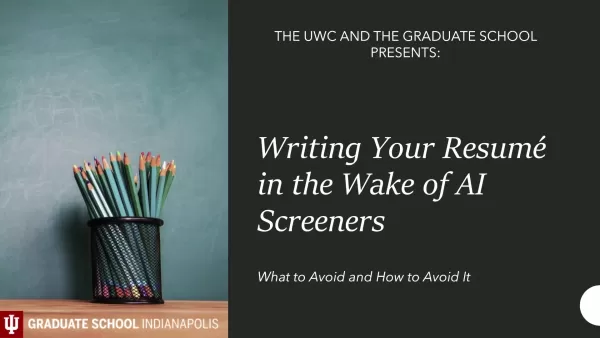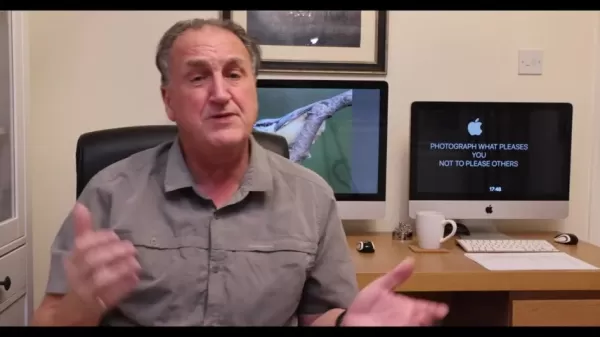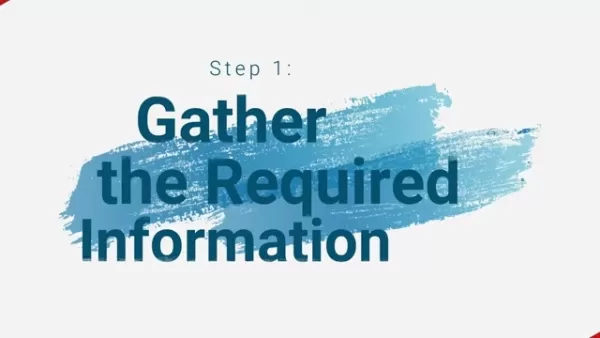Optimize Your Résumé to Pass AI Screeners and Land a Job
In today’s fiercely competitive job market, understanding how artificial intelligence (AI) influences your job applications is more crucial than ever. Employers are increasingly relying on AI-driven Applicant Tracking Systems (ATS) to sift through the flood of resumes they receive. Mastering the art of creating an ATS-friendly resume is now a non-negotiable step toward landing your dream job. This guide will walk you through essential strategies to optimize your resume, bypass AI filters, and boost your chances of catching a recruiter’s eye.
Why AI Screeners Matter
In the digital age, AI screeners—or Applicant Tracking Systems—are reshaping the hiring landscape. These tools act as the first gatekeepers in the recruitment process, handling thousands of resumes at a time. Their primary goal? Streamlining the process by filtering out candidates who don’t meet the initial requirements. According to a recent study from Harvard Business School, top talent is becoming harder to spot because many resumes simply aren’t optimized for these systems. It’s not that these candidates lack qualifications; it’s that their resumes fail to pass the ATS test. Understanding how to craft a resume that speaks the language of AI screeners is now a key part of modern job hunting.
What Exactly Are AI Screeners?
AI screeners, or ATS, are advanced software programs designed to manage and sort applicant data. Think of them as digital assistants for recruiters, capable of scanning resumes, cover letters, and application forms for specific keywords, formatting, and qualifications. Their purpose? To efficiently organize and prioritize candidates based on how closely their profiles align with the job description. If your resume doesn’t contain enough of the required keywords or has formatting issues, it might get flagged and discarded—even if you’re perfectly qualified. In short, ATS are the gatekeepers, and your resume needs to pass their scrutiny before reaching human eyes.

Case Study: Résumés That Fail vs. Résumés That Succeed
The Problem Child: Linda’s First Attempt
Linda Miller’s first resume was visually striking, with vibrant colors, custom fonts, and graphic elements. But appearances can be deceiving. Here’s why this version didn’t cut it:
- Color Overload: AI screeners typically process resumes in black and white. Bright colors can confuse the system, leading to misinterpretations.
- Graphics Galore: Personal photos and design elements? No dice. AI systems don’t recognize images, and these can disrupt text analysis.
- Formatting Chaos: Non-standard layouts and complex designs can confuse the ATS, preventing it from extracting key information.
- Unnecessary Details: Including references directly on the resume isn’t helpful—it clutters the space and distracts from more relevant content.
Her resume had all the bells and whistles, but none of it helped her pass the ATS. To fix this, Linda needed to simplify, streamline, and focus on what truly matters.
The Winning Entry: Linda’s Second Attempt
This time around, Linda stripped away the distractions and focused on clarity. Her revised resume looked—and performed—very differently:
- Simplified Formatting: Gone were the bold colors and funky fonts. She stuck to standard fonts like Arial and Times New Roman, keeping the layout clean and professional.
- No More Graphics: Personal photos and visual elements were removed entirely. This ensured the ATS could focus solely on the text.
- Standardized Sections: Clear headings and bullet points organized her information, making it easy to scan.
- Keyword Focus: She tailored her resume to match the job description, incorporating relevant keywords naturally throughout.
- References Removed: She saved her references for when they were explicitly requested, leaving room for more pertinent details.
By stripping away the noise and focusing on what counts, Linda transformed her resume into a powerhouse. Her second attempt passed the ATS with flying colors, putting her back on track to land her dream job.
Tips to Bypass AI Screeners
1. Match Keywords Like a Pro
One of the biggest hurdles for any resume is keyword alignment. ATS are programmed to look for specific terms listed in the job description. To ensure your resume makes the cut, start by dissecting the job posting. Identify the key skills, qualifications, and experiences the employer is looking for—these are your keywords.
Now, sprinkle these keywords throughout your resume strategically. Include them in your skills section, work experience descriptions, and summary statement. For instance, if the job requires expertise in project management, mention specific instances where you’ve successfully led projects. But don’t go overboard—keyword stuffing can backfire. Instead, weave the terms naturally into your narrative to highlight your strengths and experiences. Remember, AI screeners aren’t just scanning for keywords—they’re evaluating context too.
2. Simplify Formatting to Keep Things Clean
Formatting matters more than you think. ATS are notoriously finicky about non-standard elements like graphics, tables, or fancy fonts. These can confuse the system, causing it to overlook important details. To keep things simple:
- Stick to standard fonts like Arial, Times New Roman, or Calibri.
- Avoid using tables, columns, or grid layouts—they can mess with the ATS’s parsing capabilities.
- Keep bullet points and headings consistent throughout the document.
- Don’t include images or logos unless absolutely necessary.
A clean, straightforward format ensures that the ATS can easily extract the information it needs, giving your resume a better shot at success.
3. Create a Killer Skills Section
A dedicated skills section is a must for any ATS-friendly resume. This part acts as a quick snapshot of your abilities, helping the AI scanner quickly identify whether you’re a strong contender. When building your skills list:
- Include both hard skills (e.g., technical expertise) and soft skills (e.g., communication).
- Use the same terminology as the job description to maximize compatibility.
- Organize your skills into categories like technical proficiency, software expertise, or leadership skills.
Adding short descriptions or examples under each skill helps paint a clearer picture for the ATS. This way, the system understands not just what you know, but how you apply it.
4. Spell Out Acronyms for Clarity
While abbreviations and acronyms might save space, they can trip up AI screeners. Many ATS struggle to recognize shorthand terms unless they’re spelled out explicitly. To avoid confusion:
- Always spell out acronyms and abbreviations fully at least once.
- For example, if the job description mentions “SEO,” write “Search Engine Optimization.”
- After introducing the full term, you can use the acronym moving forward.
This approach ensures the ATS interprets your resume accurately, maximizing your chances of passing the initial screening.
Frequently Asked Questions
Why Are AI Screeners So Prevalent in Hiring?
AI screeners are popular because they make the hiring process more efficient. They handle large volumes of resumes, reduce the burden on recruiters, and eliminate bias by focusing strictly on qualifications. However, they’re not perfect—they can’t replace human intuition when it comes to assessing cultural fit or emotional intelligence.
What Fonts Work Best for ATS-Compatible Resumes?
Stick to standard fonts like Arial, Times New Roman, Calibri, or Helvetica. These are universally recognized by most ATS and ensure your resume is processed correctly.
How Can I Optimize My Resume for Keywords?
Start by analyzing the job description. Identify the key skills and qualifications the employer is looking for, then incorporate those keywords naturally throughout your resume. Use them in your summary, skills section, and work experience descriptions.
Is Tailoring My Resume Still Important?
Absolutely. Customizing your resume for each application ensures it aligns with the specific requirements of the job. This increases your chances of bypassing the ATS and catching a recruiter’s attention.
Related Questions
Do Cover Letters Still Matter?
Yes! While ATS focuses on resumes, cover letters allow you to showcase your personality, communication style, and enthusiasm for the role. Even in the age of AI, a well-written cover letter can make a huge difference.
Where Can I Learn More About Resume Optimization?
Check out career centers, university writing labs, and online resources like LinkedIn Learning.
Related article
 Topaz DeNoise AI: Best Noise Reduction Tool in 2025 – Full Guide
In the competitive world of digital photography, image clarity remains paramount. Photographers at all skill levels contend with digital noise that compromises otherwise excellent shots. Topaz DeNoise AI emerges as a cutting-edge solution, harnessing
Topaz DeNoise AI: Best Noise Reduction Tool in 2025 – Full Guide
In the competitive world of digital photography, image clarity remains paramount. Photographers at all skill levels contend with digital noise that compromises otherwise excellent shots. Topaz DeNoise AI emerges as a cutting-edge solution, harnessing
 Master Emerald Kaizo Nuzlocke: Ultimate Survival & Strategy Guide
Emerald Kaizo stands as one of the most formidable Pokémon ROM hacks ever conceived. While attempting a Nuzlocke run exponentially increases the challenge, victory remains achievable through meticulous planning and strategic execution. This definitiv
Master Emerald Kaizo Nuzlocke: Ultimate Survival & Strategy Guide
Emerald Kaizo stands as one of the most formidable Pokémon ROM hacks ever conceived. While attempting a Nuzlocke run exponentially increases the challenge, victory remains achievable through meticulous planning and strategic execution. This definitiv
 AI-Powered Cover Letters: Expert Guide for Journal Submissions
In today's competitive academic publishing environment, crafting an effective cover letter can make the crucial difference in your manuscript's acceptance. Discover how AI-powered tools like ChatGPT can streamline this essential task, helping you cre
Comments (1)
0/200
AI-Powered Cover Letters: Expert Guide for Journal Submissions
In today's competitive academic publishing environment, crafting an effective cover letter can make the crucial difference in your manuscript's acceptance. Discover how AI-powered tools like ChatGPT can streamline this essential task, helping you cre
Comments (1)
0/200
![WalterRodriguez]() WalterRodriguez
WalterRodriguez
 August 1, 2025 at 9:47:34 AM EDT
August 1, 2025 at 9:47:34 AM EDT
This article opened my eyes to how AI is reshaping job hunts! It's wild to think our resumes are battling algorithms first. Gotta tweak those keywords just right, or you're out before a human even sees it. 😅 Anyone else stressed about optimizing their CV for these AI gatekeepers?


 0
0
In today’s fiercely competitive job market, understanding how artificial intelligence (AI) influences your job applications is more crucial than ever. Employers are increasingly relying on AI-driven Applicant Tracking Systems (ATS) to sift through the flood of resumes they receive. Mastering the art of creating an ATS-friendly resume is now a non-negotiable step toward landing your dream job. This guide will walk you through essential strategies to optimize your resume, bypass AI filters, and boost your chances of catching a recruiter’s eye.
Why AI Screeners Matter
In the digital age, AI screeners—or Applicant Tracking Systems—are reshaping the hiring landscape. These tools act as the first gatekeepers in the recruitment process, handling thousands of resumes at a time. Their primary goal? Streamlining the process by filtering out candidates who don’t meet the initial requirements. According to a recent study from Harvard Business School, top talent is becoming harder to spot because many resumes simply aren’t optimized for these systems. It’s not that these candidates lack qualifications; it’s that their resumes fail to pass the ATS test. Understanding how to craft a resume that speaks the language of AI screeners is now a key part of modern job hunting.
What Exactly Are AI Screeners?
AI screeners, or ATS, are advanced software programs designed to manage and sort applicant data. Think of them as digital assistants for recruiters, capable of scanning resumes, cover letters, and application forms for specific keywords, formatting, and qualifications. Their purpose? To efficiently organize and prioritize candidates based on how closely their profiles align with the job description. If your resume doesn’t contain enough of the required keywords or has formatting issues, it might get flagged and discarded—even if you’re perfectly qualified. In short, ATS are the gatekeepers, and your resume needs to pass their scrutiny before reaching human eyes.

Case Study: Résumés That Fail vs. Résumés That Succeed
The Problem Child: Linda’s First Attempt
Linda Miller’s first resume was visually striking, with vibrant colors, custom fonts, and graphic elements. But appearances can be deceiving. Here’s why this version didn’t cut it:
- Color Overload: AI screeners typically process resumes in black and white. Bright colors can confuse the system, leading to misinterpretations.
- Graphics Galore: Personal photos and design elements? No dice. AI systems don’t recognize images, and these can disrupt text analysis.
- Formatting Chaos: Non-standard layouts and complex designs can confuse the ATS, preventing it from extracting key information.
- Unnecessary Details: Including references directly on the resume isn’t helpful—it clutters the space and distracts from more relevant content.
Her resume had all the bells and whistles, but none of it helped her pass the ATS. To fix this, Linda needed to simplify, streamline, and focus on what truly matters.
The Winning Entry: Linda’s Second Attempt
This time around, Linda stripped away the distractions and focused on clarity. Her revised resume looked—and performed—very differently:
- Simplified Formatting: Gone were the bold colors and funky fonts. She stuck to standard fonts like Arial and Times New Roman, keeping the layout clean and professional.
- No More Graphics: Personal photos and visual elements were removed entirely. This ensured the ATS could focus solely on the text.
- Standardized Sections: Clear headings and bullet points organized her information, making it easy to scan.
- Keyword Focus: She tailored her resume to match the job description, incorporating relevant keywords naturally throughout.
- References Removed: She saved her references for when they were explicitly requested, leaving room for more pertinent details.
By stripping away the noise and focusing on what counts, Linda transformed her resume into a powerhouse. Her second attempt passed the ATS with flying colors, putting her back on track to land her dream job.
Tips to Bypass AI Screeners
1. Match Keywords Like a Pro
One of the biggest hurdles for any resume is keyword alignment. ATS are programmed to look for specific terms listed in the job description. To ensure your resume makes the cut, start by dissecting the job posting. Identify the key skills, qualifications, and experiences the employer is looking for—these are your keywords.
Now, sprinkle these keywords throughout your resume strategically. Include them in your skills section, work experience descriptions, and summary statement. For instance, if the job requires expertise in project management, mention specific instances where you’ve successfully led projects. But don’t go overboard—keyword stuffing can backfire. Instead, weave the terms naturally into your narrative to highlight your strengths and experiences. Remember, AI screeners aren’t just scanning for keywords—they’re evaluating context too.
2. Simplify Formatting to Keep Things Clean
Formatting matters more than you think. ATS are notoriously finicky about non-standard elements like graphics, tables, or fancy fonts. These can confuse the system, causing it to overlook important details. To keep things simple:
- Stick to standard fonts like Arial, Times New Roman, or Calibri.
- Avoid using tables, columns, or grid layouts—they can mess with the ATS’s parsing capabilities.
- Keep bullet points and headings consistent throughout the document.
- Don’t include images or logos unless absolutely necessary.
A clean, straightforward format ensures that the ATS can easily extract the information it needs, giving your resume a better shot at success.
3. Create a Killer Skills Section
A dedicated skills section is a must for any ATS-friendly resume. This part acts as a quick snapshot of your abilities, helping the AI scanner quickly identify whether you’re a strong contender. When building your skills list:
- Include both hard skills (e.g., technical expertise) and soft skills (e.g., communication).
- Use the same terminology as the job description to maximize compatibility.
- Organize your skills into categories like technical proficiency, software expertise, or leadership skills.
Adding short descriptions or examples under each skill helps paint a clearer picture for the ATS. This way, the system understands not just what you know, but how you apply it.
4. Spell Out Acronyms for Clarity
While abbreviations and acronyms might save space, they can trip up AI screeners. Many ATS struggle to recognize shorthand terms unless they’re spelled out explicitly. To avoid confusion:
- Always spell out acronyms and abbreviations fully at least once.
- For example, if the job description mentions “SEO,” write “Search Engine Optimization.”
- After introducing the full term, you can use the acronym moving forward.
This approach ensures the ATS interprets your resume accurately, maximizing your chances of passing the initial screening.
Frequently Asked Questions
Why Are AI Screeners So Prevalent in Hiring?
AI screeners are popular because they make the hiring process more efficient. They handle large volumes of resumes, reduce the burden on recruiters, and eliminate bias by focusing strictly on qualifications. However, they’re not perfect—they can’t replace human intuition when it comes to assessing cultural fit or emotional intelligence.
What Fonts Work Best for ATS-Compatible Resumes?
Stick to standard fonts like Arial, Times New Roman, Calibri, or Helvetica. These are universally recognized by most ATS and ensure your resume is processed correctly.
How Can I Optimize My Resume for Keywords?
Start by analyzing the job description. Identify the key skills and qualifications the employer is looking for, then incorporate those keywords naturally throughout your resume. Use them in your summary, skills section, and work experience descriptions.
Is Tailoring My Resume Still Important?
Absolutely. Customizing your resume for each application ensures it aligns with the specific requirements of the job. This increases your chances of bypassing the ATS and catching a recruiter’s attention.
Related Questions
Do Cover Letters Still Matter?
Yes! While ATS focuses on resumes, cover letters allow you to showcase your personality, communication style, and enthusiasm for the role. Even in the age of AI, a well-written cover letter can make a huge difference.
Where Can I Learn More About Resume Optimization?
Check out career centers, university writing labs, and online resources like LinkedIn Learning.
 Topaz DeNoise AI: Best Noise Reduction Tool in 2025 – Full Guide
In the competitive world of digital photography, image clarity remains paramount. Photographers at all skill levels contend with digital noise that compromises otherwise excellent shots. Topaz DeNoise AI emerges as a cutting-edge solution, harnessing
Topaz DeNoise AI: Best Noise Reduction Tool in 2025 – Full Guide
In the competitive world of digital photography, image clarity remains paramount. Photographers at all skill levels contend with digital noise that compromises otherwise excellent shots. Topaz DeNoise AI emerges as a cutting-edge solution, harnessing
 Master Emerald Kaizo Nuzlocke: Ultimate Survival & Strategy Guide
Emerald Kaizo stands as one of the most formidable Pokémon ROM hacks ever conceived. While attempting a Nuzlocke run exponentially increases the challenge, victory remains achievable through meticulous planning and strategic execution. This definitiv
Master Emerald Kaizo Nuzlocke: Ultimate Survival & Strategy Guide
Emerald Kaizo stands as one of the most formidable Pokémon ROM hacks ever conceived. While attempting a Nuzlocke run exponentially increases the challenge, victory remains achievable through meticulous planning and strategic execution. This definitiv
 AI-Powered Cover Letters: Expert Guide for Journal Submissions
In today's competitive academic publishing environment, crafting an effective cover letter can make the crucial difference in your manuscript's acceptance. Discover how AI-powered tools like ChatGPT can streamline this essential task, helping you cre
AI-Powered Cover Letters: Expert Guide for Journal Submissions
In today's competitive academic publishing environment, crafting an effective cover letter can make the crucial difference in your manuscript's acceptance. Discover how AI-powered tools like ChatGPT can streamline this essential task, helping you cre
 August 1, 2025 at 9:47:34 AM EDT
August 1, 2025 at 9:47:34 AM EDT
This article opened my eyes to how AI is reshaping job hunts! It's wild to think our resumes are battling algorithms first. Gotta tweak those keywords just right, or you're out before a human even sees it. 😅 Anyone else stressed about optimizing their CV for these AI gatekeepers?


 0
0





























